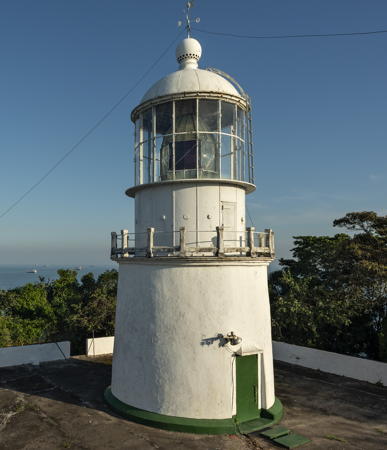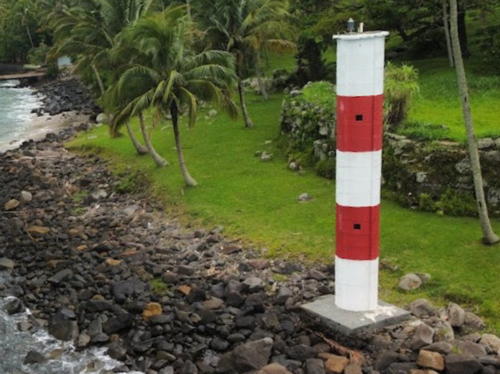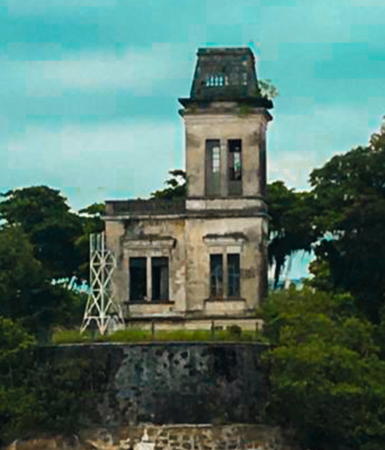The Federative Republic of Brazil (Brasil in Portuguese), the largest country in South America and fifth largest in the world, has a lengthy coastline, a large number of lighthouses, and a distinguished lighthouse history. Colonized by Portugal, Brazil declared its independence in 1822. Uniquely among American nations it was a monarchy as the Empire of Brazil until 1889.
Brazil is a federal republic with 26 states and a federal district. This page covers the lighthouses of Brazil's southeastern states of São Paulo and Paraná. This coast includes the major port of Santos. For the most part the coastline features beautiful sandy beaches framed by steep, sometimes mountainous headlands with a scattering of offshore islands.
The Portuguese word for a lighthouse is farol, plural faróis. In Brazilian use, the word farol generally applies to all light towers, regardless of whether they are enclosed structures or not. The word farolete or farolim is sometimes used for smaller towers. In Portuguese ilha is an island, ilhéu is an islet, cabo is a cape, ponta is a promontory or point of land, rocha is a rock, recife is a reef, baía is a bay, estreito is a strait, rio is a river, and porto is a port or harbor.
Active lighthouses in Brazil are owned by the navy (Marinha do Brasil) and maintained by the Centro de Sinalização Náutica e Reparos Almirante Moraes Rego (CAMR) in the Diretoria de Hidrografia e Navegacão (DHN). Many of the larger lighthouses are staffed by resident keepers or by rotating crews of naval personnel. Only a small number of Brazilian lighthouses are open to the public.
ARLHS numbers are from the ARLHS World List of Lights. BR numbers are from the official Brazilian Lista de Faroís. Admiralty numbers are from volume G of the Admiralty List of Lights & Fog Signals. U.S. NGA numbers are from Publication 110.
- General Sources
- Faroís Brasileiros
- This web site for Brazilian lighthouses has small photos and historical information for many of the major lights.
- Online List of Lights - Brazil - Southeast Coast and South Coast
- Photos by various photographers, posted by Alexander Trabas. Most of the Brazilian photos are by Capt. Theodore Hinrichs ("Capt. Theo") or Capt. Peter Mosselberger ("Capt. Peter")..
- Lighthouses in Brazil
- Photos by various photographers available from Wikimedia.
- World of Lighthouses - Brazil
- Photos by various photographers available from Lighthouses.net.
- Lista de faróis do Brasil
- Index to articles on the Portuguese Wikipedia.
- Lista de Faróis
- The official Brazilian light list.
- Leuchttürme Südamerikas auf historischen Postkarten
- Historic postcard views posted by Klaus Huelse.
- GPSNauticalCharts
- Navigational chart information for Brazil.
- Google Maps
- Satellite view of the coast.

Ilha da Moela Light, Santos, June 2021
Wikimedia Creative Commons photo by Marinha do Brasil





